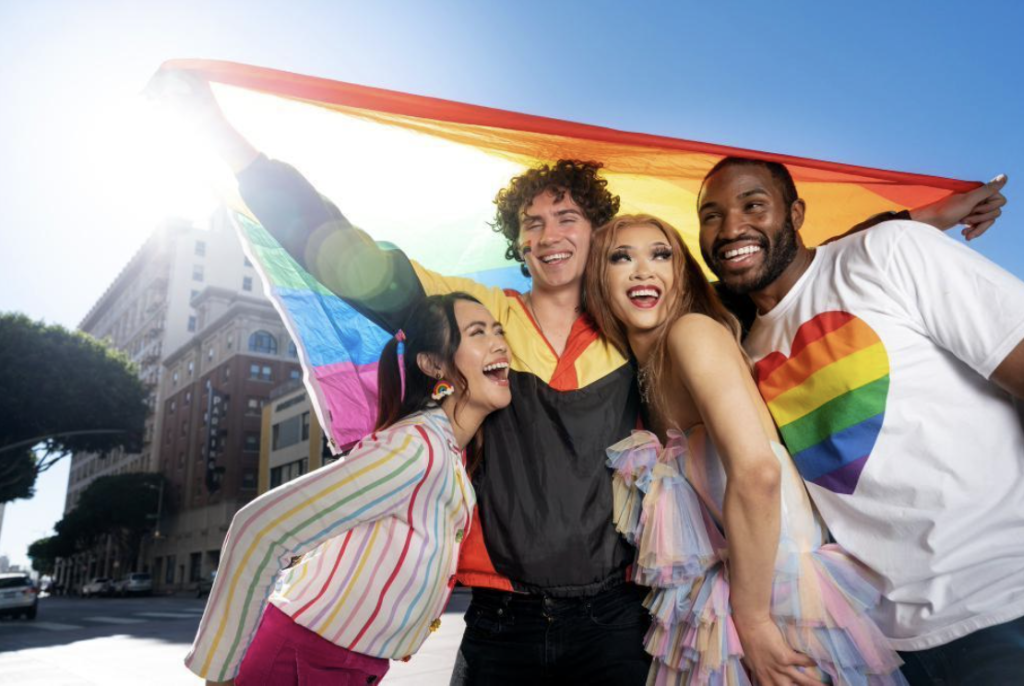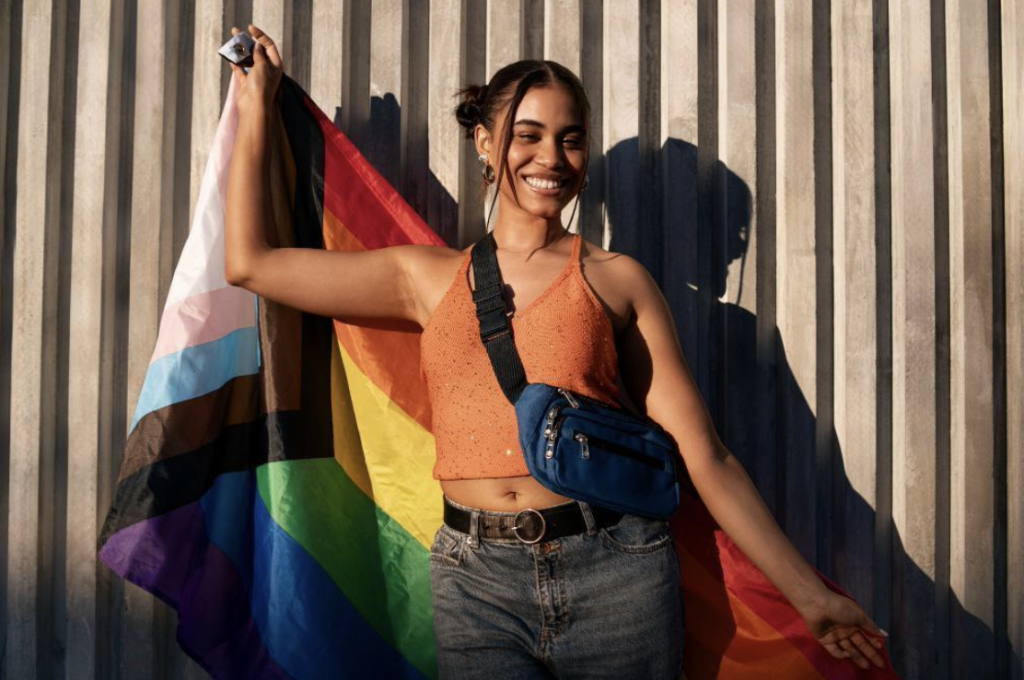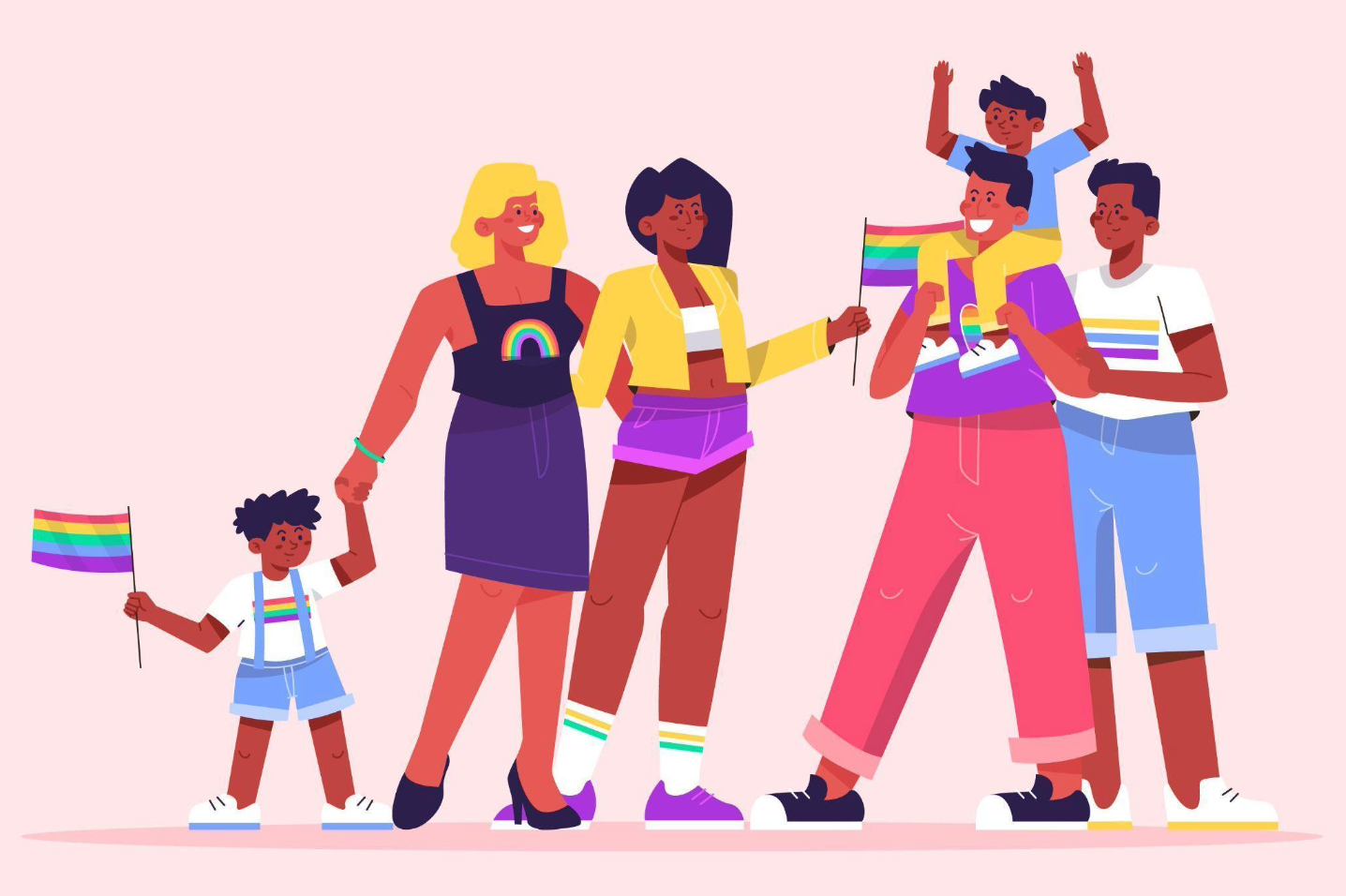
Unmasking the Shame
The journey of self-discovery for LGBTQ+ individuals is often complex. While society has made strides toward acceptance, many LGBTQ+ people grapple with a hidden enemy: internalized homophobia and transphobia. These terms describe the unconscious acceptance of negative societal messages about LGBTQ+ identities. These messages can lead to feelings of shame, self-doubt, and a struggle to fully embrace who you are.
These internalized prejudices stem from the societal messages we receive from a young age, which often portray LGBTQ+ identities as unnatural, wrong, or inferior.
In a world where heterosexuality and cisgender identities are considered the norm, LGBTQ+ individuals are constantly bombarded with messages that their desires, expressions, and very existence are somehow deviant or unacceptable. From popular media to religious institutions, from school playgrounds to family gatherings, these messages can be both overt and subtle, but they can have a profound impact on how LGBTQ+ individuals view themselves.
Internalized homophobia and transphobia can manifest in various ways, such as feelings of shame, self-hatred, and a constant need to hide or suppress one’s true identity. It can lead to low self-esteem, anxiety, depression, and even self-destructive behaviours. For many LGBTQ+ individuals, the pain and shame associated with these internalized prejudices can be overwhelming, making it difficult to embrace and celebrate their authentic selves.
However, it is important to understand that these negative feelings and beliefs are not inherent flaws within LGBTQ+ individuals. Rather, they are the result of a society that still struggles to accept and embrace diversity in sexual orientation and gender identity. Unlearning these internalized prejudices is a crucial step towards self-acceptance, healing, and living a fulfilling life as an LGBTQ+ individual.

Part 1: Recognizing the Signs of Internalized Homophobia/Transphobia.
Internalized homophobia and transphobia can manifest in various ways, and it’s essential to recognize the signs to address them effectively. Here are some common thoughts, feelings, and behaviours that may indicate the presence of internalized negativity:
1. Negative self-talk: Constantly putting yourself down or criticizing your desires, expressions, or identity. This can include thoughts like “I’m not a real man/woman,” “I’m just going through a phase,” or “I’m a freak.”
2. Discomfort with LGBTQ+ displays of affection: Feeling uncomfortable, disgusted, or even angry when witnessing same-sex couples expressing affection in public. This discomfort may stem from internalized beliefs that such expressions are inappropriate or unnatural.
3. Pressure to conform to heteronormativity: Feeling the need to act or present in a way that adheres to traditional gender roles and expectations, even if it means suppressing your true identity.
4. Distancing from LGBTQ+ communities: Avoiding LGBTQ+ spaces, events, or individuals out of fear, shame, or a desire to blend in with the heteronormative majority.
5. Denial or minimization of one’s identity: Downplaying or denying the significance of your sexual orientation or gender identity, either to yourself or others.
6. Internalized biphobia: For bisexual individuals, feeling the need to “pick a side” or believing that bisexuality is just a phase or a stepping stone to being gay or lesbian.
7. Internalized transphobia: For transgender and non-binary individuals, feeling ashamed or inadequate about their gender identity or expression, or believing that they need to conform to strict gender norms to be valid.
It’s important to note that these signs can manifest differently for individuals with different identities within the LGBTQ+ spectrum. For example, internalized homophobia in gay men may look different from internalized homophobia in lesbians, and internalized transphobia can present unique challenges for transgender and non-binary individuals.

Identity and Intersectionality: The Varied Landscape of Internalized Prejudice.
The experience of internalized homophobia and transphobia is not a monolith. It’s important to acknowledge the intersectionality of identities within the LGBTQ+ community, as these factors can influence how internalized prejudice manifests. Here’s a look at some variations:
- Gay Men: Traditionally masculine stereotypes often create pressure for gay men to exhibit hyper-masculinity to compensate for their sexuality. This can lead to internalized conflicts around expressing emotions or vulnerability.
- Lesbians: Lesbians may face pressure to conform to feminine stereotypes or experience a sense of invisibility due to the societal bias towards gay male narratives.
- Bisexual Individuals: Bisexuality is often misunderstood or invalidated, leading to internal struggles with self-doubt and feeling like they don’t belong fully in either the straight or LGBTQ+ communities.
- Transgender People: Trans individuals grapple not only with societal expectations surrounding gender roles but also with the potential for rejection from family, friends, and society at large. This can lead to intense feelings of shame and dysphoria.
- Non-Binary Individuals: Non-binary people who don’t identify strictly as male or female may experience a unique set of challenges related to internalized expectations and the pressure to conform to a binary gender system.
Understanding how internalized prejudice intersects with your specific identity is a key step toward healing. By acknowledging these complexities, you can begin to untangle the negative messages specific to your experience.

Part 2: The Road to Healing.
Unlearning internalized homophobia and transphobia is a journey, but it can lead to self-acceptance, healing, and a sense of empowerment. Here are some steps that can help you on this road:
1. Breaking free from negative societal messages: Recognize that the negative beliefs and attitudes you’ve internalized are not inherent truths, but rather a product of a society that has historically marginalized and oppressed LGBTQ+ individuals. Challenge these messages and replace them with positive, affirming narratives.
2. Challenging stereotypes and biases: Examine the stereotypes and biases you may hold about LGBTQ+ individuals, including yourself. Actively work to debunk these harmful myths and replace them with accurate, respectful information and representations.
3. Reconnecting with your authentic self: Take the time to explore and embrace your true desires, expressions, and identity. This may involve experimenting with different forms of self-expression, connecting with LGBTQ+ communities, or simply allowing yourself to be who you are without fear or shame.
4. Self-compassion and acceptance: Be kind and patient with yourself throughout this journey. Healing from internalized prejudice takes time, and it’s important to approach yourself with compassion and understanding.
5. Finding LGBTQ+ spaces and communities: Surround yourself with affirming, supportive individuals and communities. These spaces can provide validation, role models, and a sense of belonging that can be invaluable in the healing process.

Part 3: Building Self-Love and Pride.
As you work towards healing from internalized homophobia and transphobia, it’s important to actively cultivate self-love and pride in your LGBTQ+ identity. Here are some ways to do so:
1. Celebrating your LGBTQ+ identity: Embrace and celebrate the unique perspectives, experiences, and strengths that come with being part of the LGBTQ+ community. Participate in Pride events, surround yourself with positive representations, and unapologetically embrace who you are.
2. Finding positive LGBTQ+ role models and stories: Seek out inspiring stories, books, movies, and individuals that showcase the resilience, creativity, and contributions of LGBTQ+ people throughout history and in contemporary society.
3. Practicing self-care and building healthy self-esteem: Engage in activities that nurture your physical, emotional, and mental well-being. This can include things like exercise, mindfulness practices, creative pursuits, or seeking professional support if needed.
4. Setting boundaries with those who perpetuate negativity: While it’s important to approach others with compassion, it’s equally important to protect your own mental and emotional well-being. Set boundaries with individuals or environments that perpetuate negativity or prejudice towards your LGBTQ+ identity.
Building self-love and pride is an ongoing process, but it is a crucial step in overcoming internalized homophobia and transphobia. By celebrating and embracing your authentic self, you not only heal from the pain of internalized prejudice, but you also contribute to a more inclusive and accepting world for all LGBTQ+ individuals.

Part 4: Seeking Support.
While the journey towards self-acceptance and healing from internalized homophobia and transphobia is a personal one, it’s important to recognize that you don’t have to go through it alone. There are various sources of support available that can provide guidance, validation, and a sense of community:
1. LGBTQ+-affirming therapy: Working with a therapist or counselor who is trained in LGBTQ+ issues can be invaluable in addressing internalized prejudice. These professionals can provide a safe, non-judgmental space to explore your thoughts, feelings, and experiences, and offer strategies for building self-acceptance and resilience.
For LGBTQ+-affirming therapy, you can visit:
- Inner Heart Therapy: A therapy practice specializing in LGBTQ+-affirming therapy, addressing issues like internalized homophobia, coming out, and relationship concerns.
2. Online resources and support groups: The internet has opened up a wealth of resources for LGBTQ+ individuals, including online support groups, forums, and communities. These platforms can connect you with others who are on a similar journey, providing a sense of connection and shared understanding.
Check out these online resources and support groups:
- NAMI Massachusetts LGBTQ+ Resources: Offers information, support groups, and resources focused on mental health support for the LGBTQ+ community.
- MindOut: A UK-based mental health service run by and for LGBTQ+ people, providing support groups, advocacy, and information.
3. LGBTQ+ organizations and events: Many cities and communities have LGBTQ+ organizations and centers that offer various resources, events, and support services. These spaces can provide a sense of community, access to educational resources, and opportunities to connect with others who understand your experiences.
Check out these national and local LGBTQ+ organizations for support, resources, and community:
- SAGE: A national advocacy and services organization dedicated to improving the lives of LGBTQ+ elders.
- Directory of LGBTQ+ Organizations (via Classy.org): A comprehensive list of organizations serving various LGBTQ+ needs and communities across the country.
Remember, seeking support is not a sign of weakness; it is a powerful step towards healing and self-acceptance. By surrounding yourself with affirming individuals and resources, you can gain the tools, validation, and encouragement needed to overcome internalized homophobia and transphobia.
Conclusion.
Internalized homophobia and transphobia are deeply rooted, but they are not insurmountable. By recognizing the signs, challenging negative beliefs, and actively cultivating self-love and pride, LGBTQ+ individuals can break free from the chains of internalized prejudice and embrace their authentic selves with confidence and joy.
The journey towards healing is not an easy one, but it is a journey worth taking. By confronting internalized homophobia and transphobia head-on, you not only reclaim your power and self-worth, but you also contribute to a more inclusive and accepting world for all LGBTQ+ individuals.
Remember, you are not alone in this struggle. There are countless individuals and organizations dedicated to supporting and uplifting the LGBTQ+ community. Seek out these resources, surround yourself with affirming individuals, and never lose sight of the fact that your identity is valid, beautiful, and worthy of celebration.
With courage, compassion, and a commitment to self-acceptance, you can overcome internalized homophobia and transphobia, and emerge as a beacon of hope and inspiration for others on a similar journey. Embrace your truth, celebrate your authenticity, and never forget that you are enough, exactly as you are.


